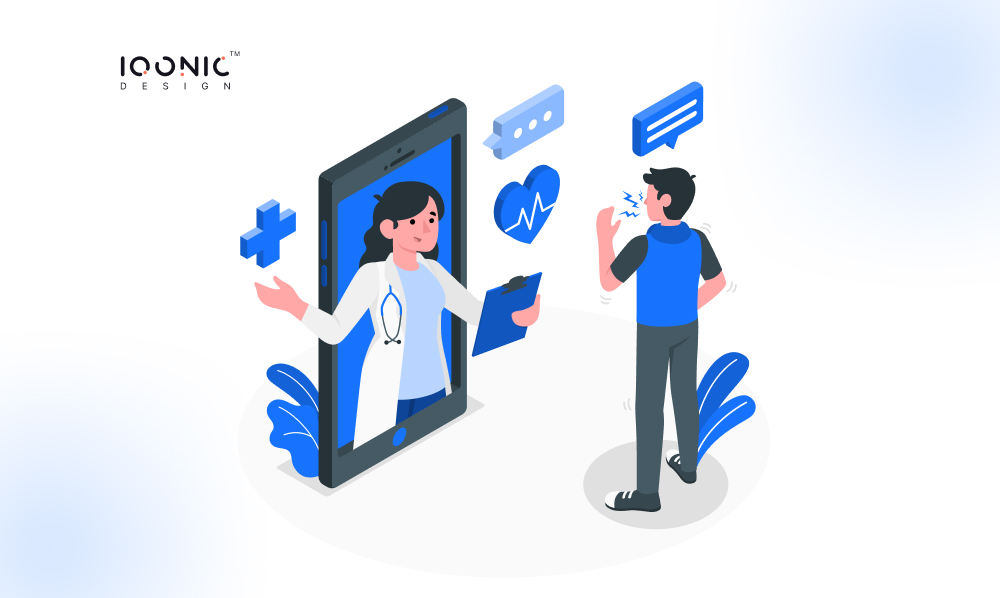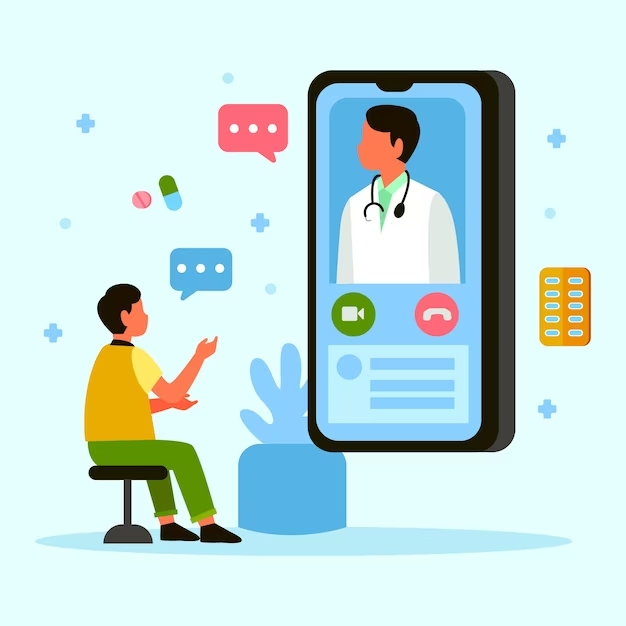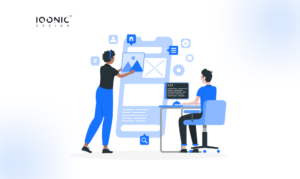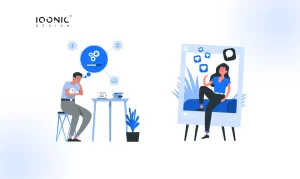
Doctor on Demand App Development: Steps and Revenue Models
In an era of technological advancements, Doctor on Demand apps have emerged as indispensable tools in healthcare. These applications are revolutionizing how we access medical services, underscoring the growing importance of telemedicine and healthcare apps.
The significance of discussing Doctor on Demand app development and revenue models cannot be overstated. These apps are not just a convenience but a lifeline for many, and understanding how they come into existence and generate revenue is crucial. The next section will delve deeper into the need for such apps in today’s healthcare landscape.
The Need for Doctor-on-Demand Apps

In our fast-paced lives, Doctor on Demand apps are a welcome solution to the challenges of modern healthcare. These apps have gained immense importance for several reasons.
Firstly, they offer unparalleled convenience. Waiting for hours in crowded waiting rooms is over. With Doctor on Demand apps, you can consult with healthcare professionals from the comfort of your home or office, saving time and reducing the hassle of commuting.
The COVID-19 pandemic accelerated telemedicine adoption. Social distancing measures and lock-downs made in-person doctor visits risky. Doctor on Demand apps emerged as a safe alternative, allowing patients to receive medical advice without leaving their homes.
As we move forward, we’ll explore the essential steps in developing these apps and the diverse revenue models they employ to sustain their services.
Steps in Doctor on Demand App Development
Doctor on Demand app Development is a multi-faceted process requiring careful planning and execution. Here, we’ll outline the crucial steps involved in bringing such an app to life:
Market Research and Target Audience:
Before anything else, thorough market research is paramount. Understand the healthcare landscape in your target region. Identify potential competitors, gaps in services, and unmet patient needs. Define your target audience – are you catering to a specific demographic or a broad spectrum of users?
Legal and Regulatory Compliance:
Compliance with healthcare laws and regulations is non-negotiable. Consult with legal experts to ensure your app meets all requirements, including patient data privacy (HIPAA in the US), licensure, and liability issues. Not following the rules can lead to serious outcomes.
Design and User Experience:
Users will only use the app if it is designed well and has a good user experience (UX). Make it intuitive and user-friendly. Prioritize features like easy appointment scheduling, secure messaging, and seamless navigation. Aesthetics matter, but functionality is key.
Development and Technology Stack:
Scalability, security, and performance are key factors when choosing a technology stack. Choose native iOS and Android development or cross-platform development. Backend infrastructure should support features like video conferencing and electronic health records (EHR) integration.
Integration of Telemedicine Features:
Telemedicine is at the core of Doctor on Demand apps. Implement video conferencing, secure messaging, and file-sharing capabilities. Integrate with EHR systems to ensure seamless data transfer between healthcare professionals and patients.
Testing and Quality Assurance:
Rigorous testing is required to identify bugs, security vulnerabilities, and usability issues. Conduct usability testing to ensure that patients and healthcare providers find the app easy to use. Protect sensitive patient information with data security.
Launch and Marketing:
It’s time to launch your app once it’s developed and tested. Boost awareness and attract users with a marketing strategy. Utilize digital marketing, social media, and partnerships with healthcare providers to promote your app. Get positive reviews from early adopters.
By following these essential steps, you can navigate the complex process of Doctor on Demand app development. Each stage is critical to ensuring your app’s success, security, and usability. Next, we’ll explore the diverse revenue models that Doctor on Demand apps employ to sustain their services and generate income.
Revenue Models for Doctor-on-Demand Apps
Doctor on Demand apps offer a range of revenue models that allow them to provide valuable healthcare services while sustaining their operations. Here are some common revenue models employed in this domain:
1. Subscription-based Model:
In this model, users pay a recurring subscription fee, typically monthly or annual, to access the app’s healthcare services. Subscribers often enjoy benefits like unlimited consultations or reduced fees per visit. This model ensures a steady stream of income and fosters customer loyalty.
2. Pay-per-Visit Model:
3. In-App Advertising:
Doctor on Demand apps can incorporate targeted advertising into their platforms. Health-related brands and pharmaceutical companies may pay to advertise their products or services to a highly engaged and relevant audience. However, balancing advertising and user experience is essential to avoid overwhelming users.
4. Pharmacy and Medicine Sales:
Some apps offer the convenience of ordering prescription or over-the-counter drugs through their platform. They may partner with pharmacies to fulfill orders. Revenue is generated through commissions on sales. This model can be a valuable add-on service for users.
Partnerships with Healthcare Providers:
Collaborating with healthcare providers, such as hospitals, clinics, or individual practitioners, can be a mutually beneficial revenue model. The app can charge these providers a fee for listing their services or for referrals made through the platform. In return, users gain access to a broader network of healthcare professionals.
Selecting the right revenue model depends on your app’s target audience, market positioning, and long-term goals. Many Doctor on Demand apps combine multiple revenue streams to diversify income sources and provide flexible options for users. Tailoring your revenue strategy to meet the needs of users and healthcare providers is key to the success of your app.
Challenges and Considerations
Doctor on Demand app development comes with its share of challenges and considerations:
Regulatory Hurdles:
Navigating the complex web of healthcare regulations, including privacy laws like HIPAA, can be daunting. Consult legal experts to ensure compliance and stay updated with evolving regulations.
Data Security:
Protecting sensitive patient data is paramount. Implement robust encryption, access controls, and regular security audits to safeguard user information from cyber threats.
User Trust:
Building trust is vital in healthcare. Establish credibility by verifying healthcare professionals’ credentials and fostering transparent communication with users. User reviews and testimonials can also enhance trust.
To overcome these challenges:
Legal Expertise:
Collaborate with legal experts experienced in healthcare compliance to ensure all regulatory requirements are met.
Tech Vigilance:
Invest in cutting-edge security technologies and practices to safeguard user data. Regularly update your app’s security measures.
Transparency:
Communicate your commitment to user privacy and data security through your app’s policies and practices.
Future Trends in Telemedicine
Telemedicine is rapidly evolving. Take advantage of these trends:
AI and Machine Learning:
AI-driven diagnostic tools and chatbots are becoming more sophisticated, aiding preliminary assessments and improving efficiency.
Wearable Integration:
Integrating wearable devices for real-time health monitoring and data sharing is gaining traction.
Virtual Reality (VR):
VR is expanding telemedicine applications, enabling immersive therapy sessions and surgical simulations.
Blockchain for Data Security:
Blockchain enhances data security and healthcare interoperability, ensuring trustworthy information exchange.
Blockchain for Data Security:
Remote patient monitoring for chronic conditions is increasing, allowing early intervention and reducing hospital admissions.
Adaptability is key in the ever-evolving telemedicine landscape. Embrace these trends to enhance your Doctor on Demand app’s relevance and effectiveness in the future.
Conclusion
In conclusion, Doctor on Demand apps represent a pivotal transformation in modern healthcare. They offer unparalleled convenience and accessibility, addressing the evolving needs of patients and healthcare providers alike. As we’ve explored the steps in Doctor on Demand app development, diverse revenue models, and the field’s challenges, it’s clear that these apps are not just a trend but a necessity.
The future of telemedicine holds exciting possibilities driven by AI, wearables, and innovative technologies. To aspiring entrepreneurs and developers, we encourage you to explore this burgeoning field. By leveraging technology to enhance healthcare accessibility, you can make a lasting impact on the well-being of individuals while building a sustainable business in the process.
Introducing Iqonic Designs: Your Expert Flutter App Development Team!
Are you dreaming of creating a cutting-edge Doctor on Demand app? Look no further! Iqonic Designs is your trusted partner in crafting high-performing mobile apps using Flutter. We’re not just another outsourcing option; we’re your team of experts committed to delivering results.
Who We Serve:
1. Startups:
If you’re a visionary entrepreneur with innovative app ideas, we’ll turn your concepts into user-centric mobile applications.
2. App Development Agencies:
Collaborate with us to expand your Flutter app development capabilities, all within a fair and affordable budget.
3. SMEs:
We’re the reliable partner SMEs need to create top-notch mobile app projects without disrupting their core operations.
What Sets Us Apart:
App Design (UI/UX):
Our designs blend aesthetics with functionality, ensuring your app captivates and satisfies users.
Flutter App Development:
We create cross-platform mobile apps that are visually stunning, highly efficient, and scalable.
API / Backend Development:
Behind every successful app is a robust backend, and we specialize in crafting powerful APIs and backend systems.
Landing Pages:
Your app’s digital front door matters! We craft compelling landing pages that effectively communicate your app’s value.
Cloud Hosting and App Uploads:
Leave the technical details to us. We handle cloud hosting and app uploads, ensuring your app reaches users on various platforms.
Support & Maintenance:
Every mobile app requires ongoing updates to stay current with technology. We provide reliable maintenance and support.
When it comes to Doctor on Demand app development, Iqonic Designs is your ultimate choice. With our expertise and commitment to results, we’ll guide you through the steps and revenue models to make your vision a reality.
Let’s turn your dream app into a success story!






